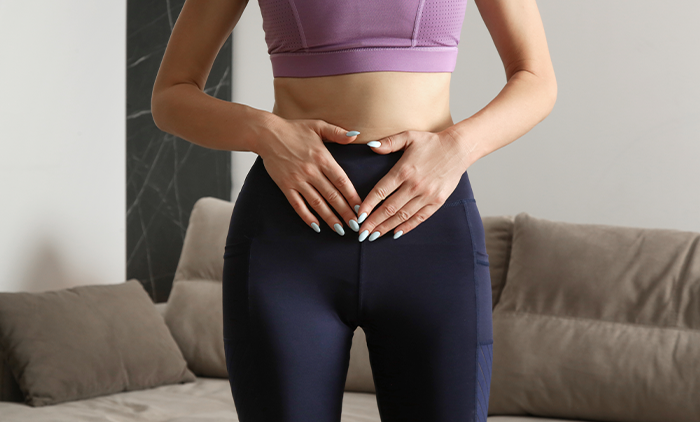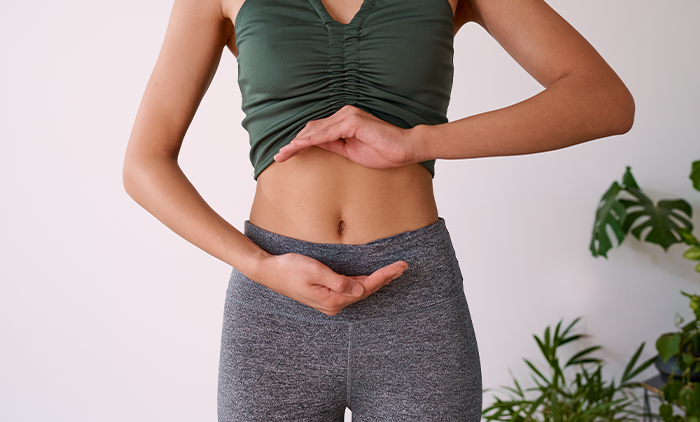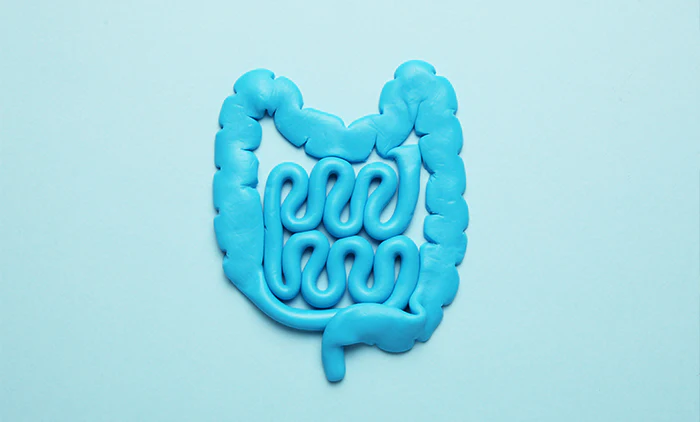Things you’ll learn in this blog |
As a woman, understanding your menstrual cycles is crucial for tracking fertility and overall health, but did you know that it can also help you optimize your workouts?
There's no one-size-fits-all approach when exercising during menstruation since each body responds differently depending on its cycle.
That said, most women are likely to experience issues and dips in performance when trying to exercise at different points of the month. Some days may feel fantastic, whereas others can feel like a drag.
Of course, this can be due to any number of reasons (such as issues with your recovery), but there's also a chance it's due to where you currently are on your menstrual cycle.
This article will explore how you can use your menstrual cycle information to optimize your fitness routine and maximize every workout, detailing what happens at each phase and why it affects your workout.
Here is what you need to know:
Does the menstrual cycle impact performance?
Assuming you’ve not got any other health concerns, such as endometriosis, your menstrual cycle shouldn't stop you from being able to exercise.
Of course, some days will be harder and more uncomfortable than others, but you should still be able to complete some form of exercise to maintain a healthy lifestyle.
That said, depending on the phase that you're in, you may see a dip in performance during certain activities, especially endurance events, such as marathons or sporting events, that require much time and energy. 
You may struggle to perform and not have the stamina you did before because your hormone and energy levels will be lower at specific points in the cycle.
How does each phase of the menstrual cycle impact exercise?
When you go through the menstrual cycle, so much of your body changes, and differences in hormone levels and chemicals in your body will impact your ability to exercise in multiple ways.
If you want to work out in a way that's in tune with your body and supports the stages of the menstrual cycle that you're in, then you need to alter the types of exercises you do to ensure that they're suitable to how you're feeling both mentally and physically.
At no point should you feel that you're unable to exercise during your cycle, but there will be stages where it's more brutal, and you won't be able to perform as optimally as you know you can. Here is a deeper look at each main style of the menstrual cycle and what exercises best match your hormones and body.
Note that this is a simplified version of the menstrual cycle, which includes various stages and functions related to multiple parts of your reproductive organs, including the ovaries, uterus and more. These four most recognized cycle stages can give you a better picture of what's happening and what type of exercise best suits you.
The different menstrual phases
Menstruation phase
When in your menstruation phase, many women may feel it the most difficult to perform exercise for various reasons.
The first is hormonal - during this cycle phase, most women will experience a rise in progesterone and a drop in estrogen, the vital female sex hormone.
The result is that many women may have deficient levels of energy and motivation, which can prevent women from working out or cause their workouts to be less effective. 
In addition, many women experience pain during this cycle phase, including back and abdominal pain. This can make it much harder to perform specific strength exercises like weightlifting and cardio or core-focused exercises like running or aerobics.
Plus, as this is the bleeding phase of the cycle, many women may also feel a bit uncomfortable engaging in physical activity, although this depends on person to person.
If you're determined to exercise during this phase of the menstrual cycle, then the best options include lighter activities that are less strenuous to your back and core.
Light walking or other forms of light cardio can be a good thing to keep you active, and it helps relieve symptoms of menstrual bloating. You can also try low-volume strength training, using resistance bands or even body weight for a beneficial, although less challenging, workout.
That said, all this is down to how you feel as an individual.
If there's no pain, you feel comfortable and have the motivation to train hard, then do so; however, if you find that you're struggling to match your performance for earlier in the month, then the factors mentioned may be the reason.
Proliferative Phase
This menstrual cycle phase follows the menstruation phase and describes the period between the end of your period to ovulation.
Within this phase, the uterus builds up a thick inner lining while the ovaries prepare eggs to release once you reach the ovulation phase. During the proliferative phase - which means to grow quickly - your estrogen levels will usually rise and be the highest across the entire cycle.
This means that you should have a lot more energy and feel more yourself, so this period is best for you to ramp up the intensity of your workouts and improve your strength. 
For example, it is the best time to tackle HIIT training sessions, strength training with heavier weights, or long-distance cardio like running or swimming.
Ovulation phase
The ovulation phase is the shortest phase of the entire menstruation cycle. It usually only lasts three to five days, depending on the individual, and this timeframe can change each cycle. During ovulation, a mature egg is released from the ovary, triggered by a high level of luteinizing hormone.
From here, the egg travels from the ovary along the fallopian tube towards the uterus, where if it's not fertilized in around 24 hours, it will disintegrate and be absorbed by the uterus walls.
In addition to high LT hormone, you may also have high estrogen, meaning you should still have the energy to complete various high-endurance exercises.
Running, kickboxing, and other forms of cardio are great exercises to complete during this cycle. However, some women can experience bloating, nausea and other pain during ovulation, so you may want to alter your exercise to suit your needs.
Luteal phase
The luteal phase is the final part of the menstrual cycle and can last between 9 to 16 days on average.
During this period, the follicle that held the egg turns into a corpus luteum, where it makes the hormone progesterone and estrogen to support pregnancy. If no pregnancy occurs, the corpus leteum breaks down 11 days after ovulation.
This substance and the uterus wall become the substance released during your next menstruation phase.
Regarding your hormones, progesterone will peak and then drop if no pregnancy has occurred, which can contribute to various premenstrual symptoms. This includes things such as mood changes, headaches, acne and bloating. When experiencing these symptoms, you may find it harder to get the motivation to work out and exercise.
To help support better exercise, switch up to low-intensity workouts with more recovery time between sets, as this can help ensure that you're capable and have the energy to continue training. You can up the intensity if required, just listen to your body and reduce the stress or stop entirely if you're struggling too much. 
To help give you the energy to continue to work out, make sure that you fuel on carbohydrates before and during your workout during this phase to ensure you can get the most out of it.
How to combat the impact of the menstrual cycle?
If you're in a menstrual cycle period where your performance and ability to work out well are hampered but don’t want to compromise your training, there are some things you can do.
It's important to state that you shouldn't feel that you have to fight your menstrual cycle. As someone menstruating, it’s part of your life, and it’s about adapting, not necessarily overcoming.
Instead, these tips help you support your cycle and give your body what it needs to help you perform well and feel good, regardless of your menstrual cycle stage.
Some things you can do to ensure that you're able to exercise and aren't as badly affected by your cycle include:
Eating carbohydrates
During certain parts of the menstrual cycle, your body lacks energy, meaning you may feel more sluggish and lower in energy than usual.
This typically occurs during your menstruation phase but can also come late on in the cycle. If you notice a drop in energy, try to add more carbohydrates to your diet, as this can give you a boost of energy that can supplement the drop in estrogen in your body. 
Stick to healthy and slow-releasing carbs, as sugar can cause your energy levels to spike, resulting in a big crash that can have you feeling even more exhausted.
Getting enough sleep
Try to get in the required eight hours most nights, and if you need it, try to give your body even more time so that your body can recharge and recuperate.
This is especially important when weight training at periods where your estrogen is low, as a lack of this hormone will mean that your muscles will struggle to repair during the day.
Sleep allows muscle fibers to repair, ensuring you don't suffer from painful DOMS (delayed onset muscle soreness).
Stay hydrated
Hydration can help you maintain energy levels and feel good, even when experiencing tough menstrual cycle phases. Staying hydrated can help physical symptoms of PMS, such as bloating and stomach pain, which can facilitate better exercise. 
In addition, water and good hydration can replace fluids lost in sweat, ensuring that you don't suffer from unnecessary headaches and maintain good performance.
Eat well
The right food choices can go a long way if you're trying to keep up with your exercise routine while on your menstrual cycle.
Eating plenty of lean proteins like poultry or fish helps your body to produce essential hormones, while complex carbohydrates like whole grains and potatoes provide lasting energy.
Be sure to include plenty of brightly colored fruit and vegetables full of vitamins and minerals to help reduce cramping or bloating.
Packed with fiber, nuts and seeds are an excellent fuel source for physical activity during the menstrual cycle and aid in digestion.
Of course, it can be hard to stick to a good diet during specific periods, as low moods and distorted thoughts make us more susceptible to caving into eating treats like chocolate and sweets. This is fine if in moderation, but add in a few of the good foods around this to give you the best chance to perform.
Plan exercise around your cycle
Now that you know the basics of how to get the most out of exercise during your menstrual cycle and know what kinds of training to do for each phase, it's time to start putting it into practice.
A regular exercise regimen can help normalize hormonal fluctuations and reduce symptoms associated with PMS.
Start slowly and build up gradually once you understand the connection between hormone levels and body movement. Also, eat well-rounded meals with plenty of fruits and vegetables blended with healthy proteins and grains, keeping your energy levels optimally high throughout each cycle stage.
Above all else, remember that exercise should feel enjoyable for you no matter which stage of your cycle you're in – so find an activity that suits you best and don't forget to listen to your body.



